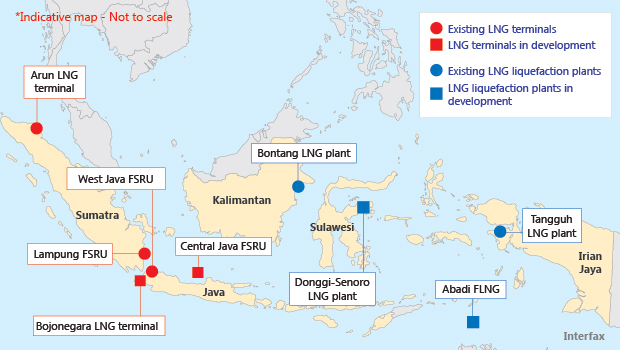Samsung set to build Malaysia’s second LNG terminal
Petronas is pushing ahead with plans for a second LNG terminal, awarding the EPC contract for what will be part of a multibillion-dollar petrochemical complex designed to help meet Malaysia’s growing energy demand.
The state-run group has awarded a contract for the engineering, procurement, construction and commissioning of the terminal, known as RGT-2, to Samsung C&T, which entered the LNG sector a couple of years ago with construction of the Singapore LNG terminal (see Samsung C&T looks beyond Singapore LNG, 17 April 2014).
Samsung expects to complete work on the 5 mtpa regasifer and two 200,000 cubic metre LNG storage tanks by April 2018, the South Korean company said on Monday.
Petronas approved plans for its second LNG import facility in April, when it reached an FID on the Pengerang Integrated Complex in southern Johor. The project includes a refinery and petrochemical integrated development with a capacity of 7.7 mtpa, and is estimated to cost $16 billion. The LNG terminal and other associated facilities are expected to cost another $11 billion.
Malaysia’s first LNG regasifier – the 3.8 mtpa Malacca facility – came online in mid-2013, marking a shift for a country that has historically been among the world’s largest exporters.
The majority of Malaysia’s LNG imports will begin arriving once the Santos-operated Gladstone LNG plant starts delivering cargoes. Petronas has a 27.5% stake in the project and a contract to receive 3.5 mtpa over 20 years. The CBM-to-LNG plant is due to come online in 2015, but its ramp-up to capacity will be slow – the first train is expected to take two-to-three months, while the second will take two-to-three years (see GLNG secures more gas amid supply concerns, 27 March 2014).
In the meantime, Petronas is also importing LNG under two contracts lasting three and a half years, one with Statoil for the flexible supply of around 1 billion cubic metres, and the other with GDF Suez for 2.5 mtpa.
While moving into the LNG import sector, Petronas also continues to expand its export capacity, which is expected to grow from 27 mtpa in 2013 to 42 mtpa by 2022. As some of its long-term supply contracts expire over the next decade, its stock of flexible, uncontracted LNG is projected to grow from 2.5 mtpa to 26 mtpa in the same period (see Malaysia poised to rival Qatar’s LNG supremacy, 27 August 2014).









